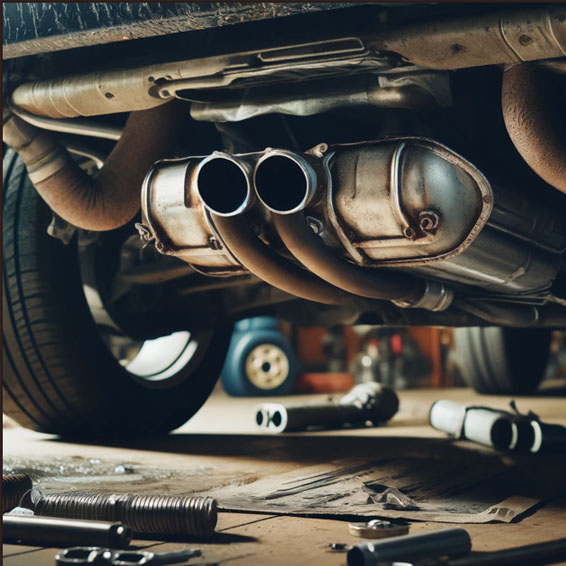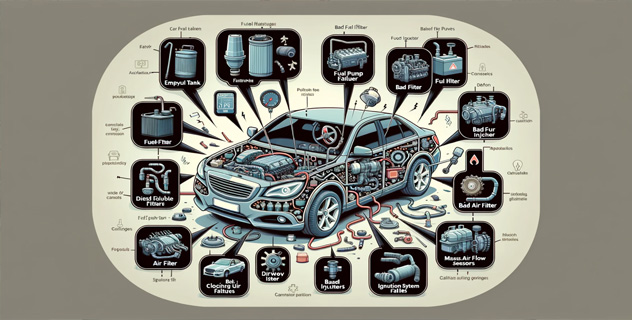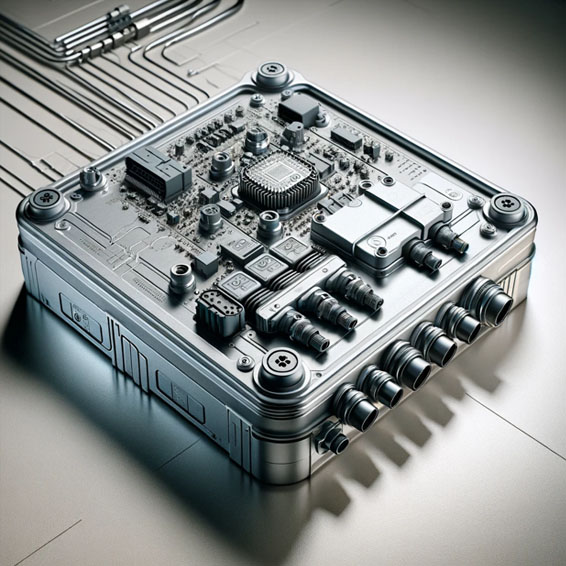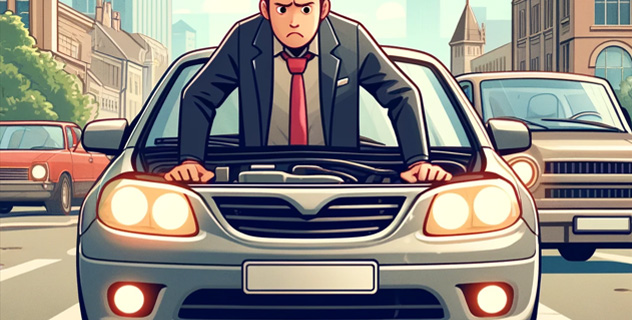Few things are more aggravating than when your car stalls just as you’re about to head out or back up. This common issue can leave you puzzled, but don’t worry—this guide will explain why it happens, the potential causes, how to diagnose the problem, and what you can do to fix it. By the end of this article, you’ll have a clearer understanding of what’s going on under the hood and how to keep your car running smoothly.
car stalls when put in drive or reverse
Before diving into the reasons for stalling, it’s helpful to know a bit about how your car operates.
The Engine
Think of the engine as your car’s heart. It converts fuel into energy to power the car, involving parts like pistons, a crankshaft, a camshaft, and valves working together in harmony.
Transmission System
The transmission system transfers energy from the engine to the wheels, ensuring the right amount of power gets to the wheels whether you’re speeding up or slowing down. Transmissions can be automatic or manual.
Fuel System
Your car’s fuel system delivers fuel to the engine and consists of the fuel tank, fuel pump, fuel injectors, and fuel lines. Without a properly working fuel system, your engine won’t get the fuel it needs.
Ignition System
This system ignites the air-fuel mixture in the engine’s cylinders. It includes spark plugs, an ignition coil, and the battery.
Air Intake System
The air intake system brings air into the engine, including components like the air filter, throttle body, and intake manifold.
Exhaust System

The exhaust system removes the byproducts of combustion from the engine, including the exhaust manifold, catalytic converter, and muffler.
Car stalls when put in drive or reverse: Common Causes

Several factors can cause your car to stall when you put it in drive or reverse. Here are some usual suspects:
Faulty Idle Air Control Valve (IACV)
The Idle Air Control Valve manages the engine’s idle speed by controlling the air that bypasses the throttle plate. If it’s dirty or malfunctioning, it can cause the engine to stall.
Dirty Throttle Body
The throttle body regulates how much air enters the engine. If it’s dirty, it can choke off airflow and cause stalling.
Vacuum Leaks
Leaks in the vacuum hoses or intake manifold can upset the balance of air and fuel, leading to stalling.
Fuel System Issues
A clogged fuel filter, faulty fuel pump, or dirty fuel injectors can prevent your engine from getting enough fuel, causing it to stall.
Ignition System Problems
Worn spark plugs, a failing ignition coil, or a weak battery can disrupt the ignition process and cause stalling.
Transmission Problems
Issues with the transmission, like low fluid levels or a faulty torque converter, can cause the car to stall when you shift into drive or reverse.
Engine Control Unit (ECU) Issues

The ECU controls various engine functions. If it malfunctions, it can lead to stalling.
How to Diagnose the Problem
Figuring out why your car is stalling requires a systematic approach. Here’s how you can diagnose the issue:
Check for Diagnostic Trouble Codes (DTCs)
Modern cars have an On-Board Diagnostics (OBD) system that stores trouble codes when there’s an issue. An OBD-II scanner can help you retrieve these codes and pinpoint the problem.
Visual Inspection
Look under the hood for any obvious issues like loose or damaged hoses, oil leaks, or dirty components.
Test the Idle Air Control Valve
Remove the IACV and check for dirt or damage. Clean it if necessary and test its operation with a multimeter.
Inspect the Throttle Body
Check the throttle body for dirt or carbon buildup. If it’s dirty, clean it with a throttle body cleaner.
Check for Vacuum Leaks
Use a vacuum gauge or smoke test to detect any vacuum leaks in the intake system.
Fuel System Inspection
Inspect the fuel filter, fuel pump, and fuel injectors. Replace or clean them if needed.
Ignition System Check
Examine the spark plugs, ignition coil, and battery. Replace any components that are worn out or faulty.
Transmission Fluid Check
Ensure the transmission fluid is at the correct level and in good condition. If it’s low or dirty, it could be the cause of your stalling issue.
ECU Diagnostics
If all else fails, have a professional check the ECU for software or hardware issues.
Solutions and Preventive Measures
Once you’ve figured out what’s causing your car to stall, you can take steps to fix it. Here are some common solutions and preventive measures:
Clean or Replace the Idle Air Control Valve
If the IACV is dirty or faulty, clean it with a suitable cleaner or replace it.
Clean the Throttle Body
Use a throttle body cleaner to remove any dirt or carbon buildup, improving airflow and preventing stalling.
Fix Vacuum Leaks
Replace damaged vacuum hoses or gaskets to fix any leaks, ensuring the correct air-fuel mixture.
Address Fuel System Issues
Replace a clogged fuel filter, and ensure the fuel pump and injectors are functioning properly. Regular maintenance of the fuel system can prevent stalling.
Replace Ignition System Components
Replace worn spark plugs, a faulty ignition coil, or a weak battery to ensure the ignition system is working correctly.
Maintain Transmission Fluid
Regularly check and maintain the transmission fluid at the correct level. If it’s dirty, have it flushed and replaced.
Update or repair the ECU
If the ECU is the issue, have it repaired or updated by a professional, which may involve reprogramming or replacing the unit.
Regular Maintenance
Regular vehicle maintenance, including oil changes, air filter replacements, and periodic inspections, can prevent many stalling issues.
Conclusion
Having your car stall when you put it in drive or reverse can be incredibly frustrating, but understanding the common causes and how to diagnose the issue can help you fix the problem. By keeping up with regular maintenance and addressing issues promptly, you can ensure a smoother and more reliable driving experience. If the problem persists, don’t hesitate to seek professional help to diagnose and fix the issue.
FAQs
What should I do if my car stalls when shifting to drive or reverse?
- Start by conducting a visual inspection and using an OBD-II scanner to check for error codes. Then, address the identified issues based on the diagnostic results.
Can a clogged fuel filter cause my car to stall in gear?
- Yes, a clogged fuel filter restricts fuel flow to the engine, which can cause stalling when the vehicle is in gear.
How often should I replace my car’s spark plugs and ignition coils?
- Spark plugs should typically be replaced every 30,000 to 50,000 miles, while ignition coils can last longer but should be checked regularly.
What are the signs of a failing torque converter?
- Symptoms of a failing torque converter include slipping, shuddering, and stalling when shifting gears.
How can I tell if my car’s sensors are malfunctioning?
- If sensors like the MAF, MAP, or oxygen sensors are faulty, you may notice poor engine performance, stalling, or illuminated warning lights on the dashboard.

